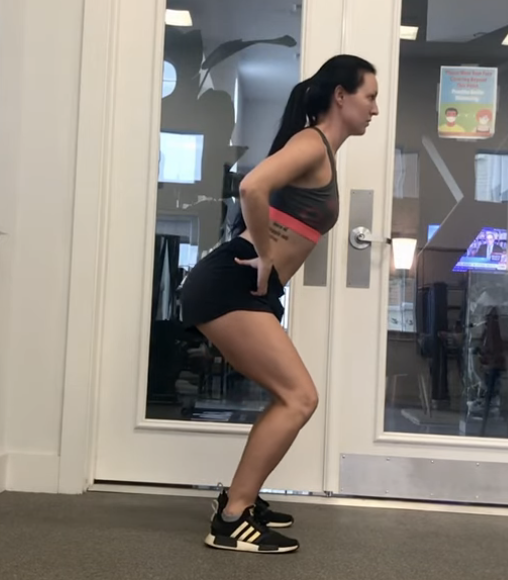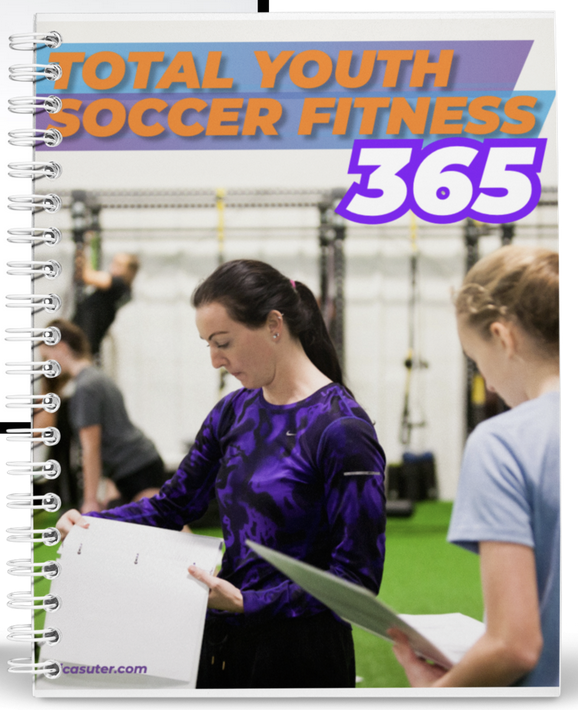
03 Aug Stop Static Stretching Youth Female Athletes
Young girls’ muscles aren’t tight. They’re weak.
Stop static stretching them. Just stop.
Spare them the nonchalant team stretch at the end of the game, please.
There have been numerous times I’ve been out watching soccer games and wandered around the sports complex to only see a team of female athletes touching their toes for a mundane, team stretch. Sadly, no one is truly stretching. When the coach says to circle up and stretch, young girls are just going through the motions while picking dandelions or gossiping with their teammates. Worst of all, when I see static stretching happening pre-game, I want to bang my head into a wall.
The reason muscles get tight is not due to physiology. It’s due to neurology. When the brain is fatigued, it tightens up the muscles to protect them and their deep tissue. Think of it as the brain going into “defense mode.” So if the brain is at fault, then holding a muscle in a lengthened position is not going to do the trick, in fact, could make matters worse. There are numerous studies that say static stretching inhibits muscular performance, reduces strength and weakens lower body stability, and can even impair explosive performance (Simic 2012). It also doesn’t help with reducing injuries like shin splints, sprains and strains, according to research from Clinical Journal of Sport Medicine (Hart 2005).
One of the most common static stretches is reaching down to touch the toes. Don’t get me started on the “my hamstrings are tight” nonsense. Alright, I already started. Here’s what everyone needs to know: most youth female athletes do not have tight hamstrings. Rather, they have weak hamstrings because their sports are not recruiting this muscle group enough, unless they are performing a max velocity sprint, and we all know how rarely this occurs. Instead of stretching the hamstrings, come back to the strengthening movements like Deadlifts and Single Leg Deadlifts, as well as work on better mobility in the hip flexors.
When the hip flexors are over-activated, the hamstrings take on the pain because the brain goes back into lock down mode. Beyond strength and mobility work, the day after a game, I’d rather have a girl go for a few easy breezy, sub-maximal 40-yard sprints, followed by a walk. Please spare her the touching her toes shenanigans. It does nothing.
So, if static stretching isn’t the answer, then what is? Female athletes are better off focusing on the neurological component of recovery. Meditating pre and post-game help the nervous system return to a parasympathetic state, so the brain doesn’t go on the defense and lock up the muscles.
Meditating pre and post-game help the nervous system return to a parasympathetic state, so the brain doesn’t go on the defense and lock up the muscles. Share on XThey’re also better off focusing on strength training year-round to make the muscles as durable as possible. Strength training is also flexibility training. When a girl performs a Single Leg Deadlift, a movement for hamstring strengthening, she is lengthening the muscle during the eccentric part of the movement. This alone is enough to work on flexibility, while also bolstering tissue durability, balance, and core stability. Sounds like bang-for-buck to me.
Static stretching isn’t the solution.
For more supple female athletes, they need stronger bodies and calmer minds.
Get the TOTAL YOUTH SOCCER FITNESS EBOOK ON SALE FOR JUST $29 HERE
Get a year-round youth speed, strength and conditioning program TOTAL YOUTH SOCCER FITNESS 365 HERE

For coaching education, a 15 Module video library and in depth Zoom sessions on training the youth female athlete, join my FEMALE ATHELTE FITNESS MENTORSHIP HERE
Zoom calls are on Tuesdays 12:30pm EST, cohorts begin final Tuesday of each month.

REFERENCES
Simic L, Sarabon N, Markovic G. Does pre-exercise static stretching inhibit maximal muscular performance? A meta-analytical review. Scand J Med Sci Sports. 2013 Mar;23(2):131-48. doi: 10.1111/j.1600-0838.2012.01444.x. Epub 2012 Feb 8. PMID: 22316148.
Hart L. Effect of stretching on sport injury risk: a review. Clin J Sport Med. 2005 Mar;15(2):113. doi: 10.1097/01.jsm.0000151869.98555.67. PMID: 15782063.


No Comments